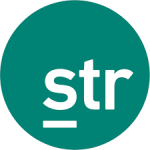With the Fall 2022 school semester in full swing, STR’s School Break Report can help hoteliers, destinations, and anyone invested in the travel industry predict trends and swings for travel demand during the fall break season. With the bigger COVID-related shifts seen over the last couple years finally simmering down, locking in on the more subtle shifts this year will be crucial to planning ahead.
As of late September, no major shifts have been seen regarding the percentage of public school district (K-12) students out of session and available to travel when comparing year over year. There was little movement seen around the Labor Day weekend, which was likely the result of school districts postponing the 2021 start date due to the Delta wave. There was also a small bump for the weekend of Rosh Hashanah, which started Sunday, 25 September and ended the following Tuesday.
Looking ahead, year-over-year shifts in this year’s fall break season appear to be relatively muted and revolve around the October and November holidays.
The fall break will peak around the weekend designated for Indigenous People’s Day, as is often the case, with a higher proportion of students on break in week 41 of 2022 compared to 2021 — an average of 2.3 percentage points more per day. Based on STR’s sample of 26 million students, this would translate to roughly an additional 1.3 million students (and their families) that are available to travel that week. Because STR’s sample covers 53% of the K-12 students in the US, we can extrapolate that the real number of additional students is roughly twice that amount. While the boost of students on break may seem slight as a percentage point change, the resulting increase in the number of families that are freed up to travel will likely move the needle in mid-October.
This pattern repeats more intensely in early November. With a major election year ahead of us (with Election Day landing on Tuesday, 8 November), much of the vacation volume seen in the second half of week 44 in 2021 will instead shift to the first half of week 44 in 2022. While this may actually just end up being a wash for week 44 as a whole, note that there will likely be a shoulder effect that may disrupt weeks 43 and 45 for those that look at week-on-week trends, or year-on-year trends by week. As shown in the graphic above, the Election Day boost on 5 November will free up a considerable contingent of families for travel, possibly pushing week 43’s average demand upward. With the downward shift on 13 November, the inverse will likely be true for week 45.
Let’s jump ahead even further to the 2022 holidays that may interest industry analysts the most. We likely won’t see much change in the patterns around the week of Thanksgiving, which lands on 24 November this year. This will be a much more dramatic shift from 2023 to 2024, when Thanksgiving jumps from 23 November to 28 November, respectively.
The Christmas lead-in this year, though, is a much different story:
With Christmas landing on a Saturday in 2021 (and Christmas Eve subsequently on a Friday), a much larger proportion of schools were inclined to take the whole week off before Christmas. This year, however, Christmas lands on a Sunday, meaning that the “observed” day for the holiday will be Monday, 26 December — leading many districts to hold off on their Christmas break until the following week. This resulted in an average of 85% of K-12 students on break in week 51 of 2021, versus 67% for the matching week in 2022. This translates to roughly 8.9 million fewer students on break in week 51 this year compared to last if we extrapolate STR’s sample out to all K-12 students in the U.S. This will create a significant squeeze in travel demand over the entire span of week 51, and the shoulder effect will likely be seen at the tail end of week 50 as well.
The major downward shift in the Christmas lead-in period this year could be balanced out by extended vacation periods following the 2023 New Year’s holiday.
Spotting these subtle shifts in school breaks are important to prepare for future travel demand and market opportunities. Further changes around holidays and breaks in the spring could impact your market. Learn more about how our School Break Report can spot your potential.


